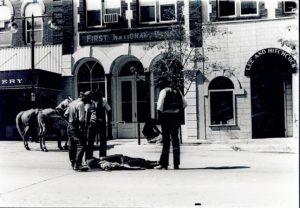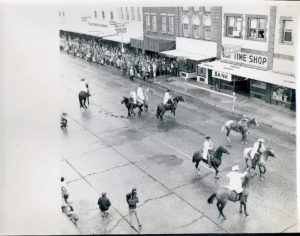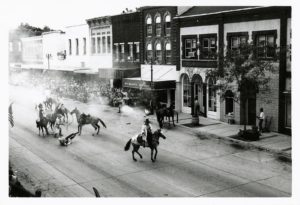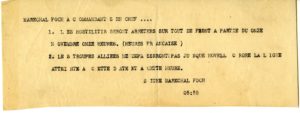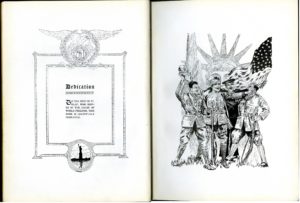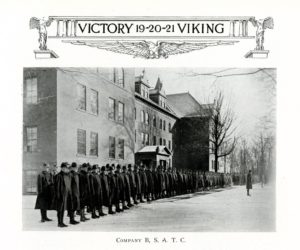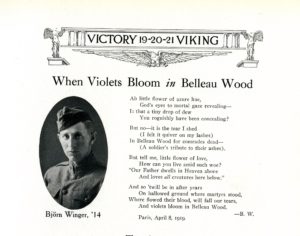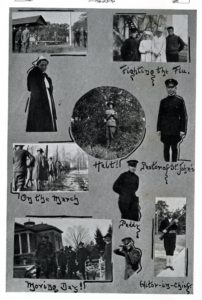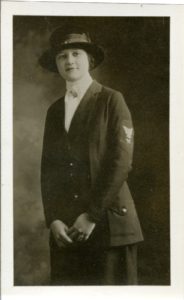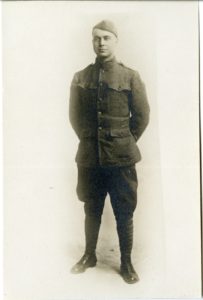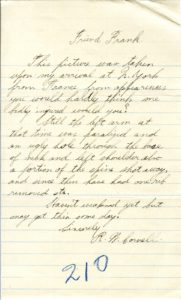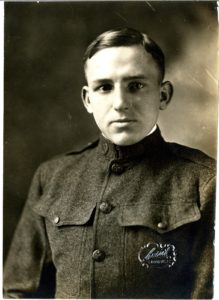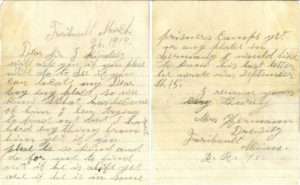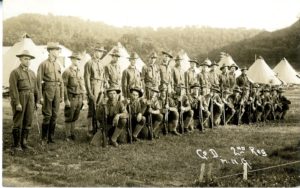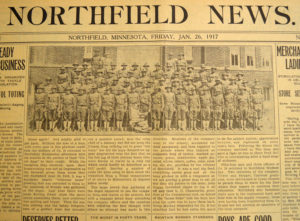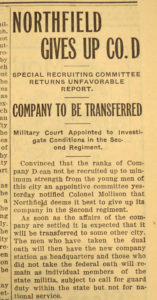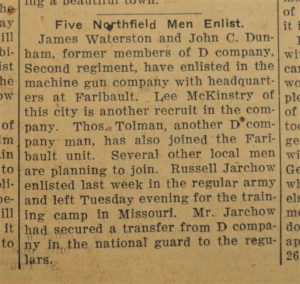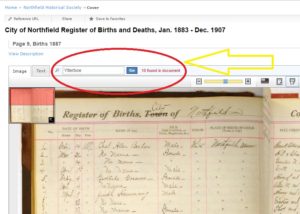One of the reasons we chose to focus our digitization efforts on World War I materials this year is the fact that there is a massive collection of documents from the Rice County War Records Commission at the Rice County Historical Society. But they have never been digitized, so our ability to share the information contained within is limited.
I am pleased to say that I have recently begun the long process of scanning one of the most important documents in that collection – a massive bound ledger with two-sided pages dedicated to individual soldiers who came from Rice County, Minnesota. The pages contain family history, enlistment data, department and rank served, and any other miscellaneous information (often including Army serial numbers, name of ship that carried them to Europe, where stationed, which battles fought, and date and location of discharge).

Cover of the Record of Soldiers in World War I, Rice County Historical Society collection (2010.119.04)
The State of Minnesota created the War Records Commission in 1918 to ensure that the activities of Minnesota individuals and units were properly documented in a central location, usually based in each county. In prior wars, there had been no organized system to collect this kind of data, and some veterans had difficulties proving that they had even served in the military. State leadership realized if they did not work to collect this information from this Great War, it would be more difficult to bring it all together before too much time had passed.
The Rice County War Records Commission was based in Faribault and Frank M. Kaisersatt, a prominent citizen from Wheatland Township, was its chairman. Over the course of about five years, the commission located and recorded the information from as many men who served in some capacity during World War I as they could find. Some records exist only as a name, with no other information. Others offer a wealth of knowledge, including even names of commanders or more. A few note that the man was killed “somewhere in France,” which highlights the fact that tracking down some of these men – some of which had no family at home – was very difficult considering the circumstances of conflict and disease.

Excerpt from Thomas Ansems’ record
While going through even just a few of these records, I am amazed by the variety of ways in which these people from Rice County served during the war. Some were cooks. Some joined the medical corps, or sanitation, or the air service. Others were in the ammunition trains. Some barely made it to Europe before the end of the war in November 1918, so they stayed over with the American Expeditionary Force as the Army of Occupation in Germany from 1918 through 1919. One soldier enlisted in the Student Army Training Corps (S.A.T.C.) at Carleton College on October 11, 1918, exactly one month before the armistice. He trained there for only two months before being discharged, but his record exists in this book, as well.

Excerpt from Claude Revier Babcock’s record
And they had a variety of backgrounds, as well. Considering Rice County’s agriculture-based economy, many servicemen were farmers, but there were also teachers, mechanics, a “Proprietor of a Machine Shop and Foundry,” and a professor of chemistry at St. Olaf College who wasn’t even born in Rice County.

Excerpt from Arthur Van Krogh Anderson’s record
While there are many pages to go before this book will be shared in its entirety on the Northfield History Collaborative, I can already see how it will add to our understanding of Northfield-area experiences during World War I – which is exactly the purpose of this digitization project. Stay tuned for more updates!
Note: there are many resources out there on the state level on the War Records Commission in Minnesota, or World War I military service records in general. They include:
- A Library Guide to Military Records of World War I at the Minnesota Historical Society’s Gale Family Library
- Family History Resources for Military Records available from the Minnesota Historical Society based on type of record or particular conflict
- A Finding Aid for World War I soldier photographs from the Minnesota War Records Commission at the Minnesota Historical Society


